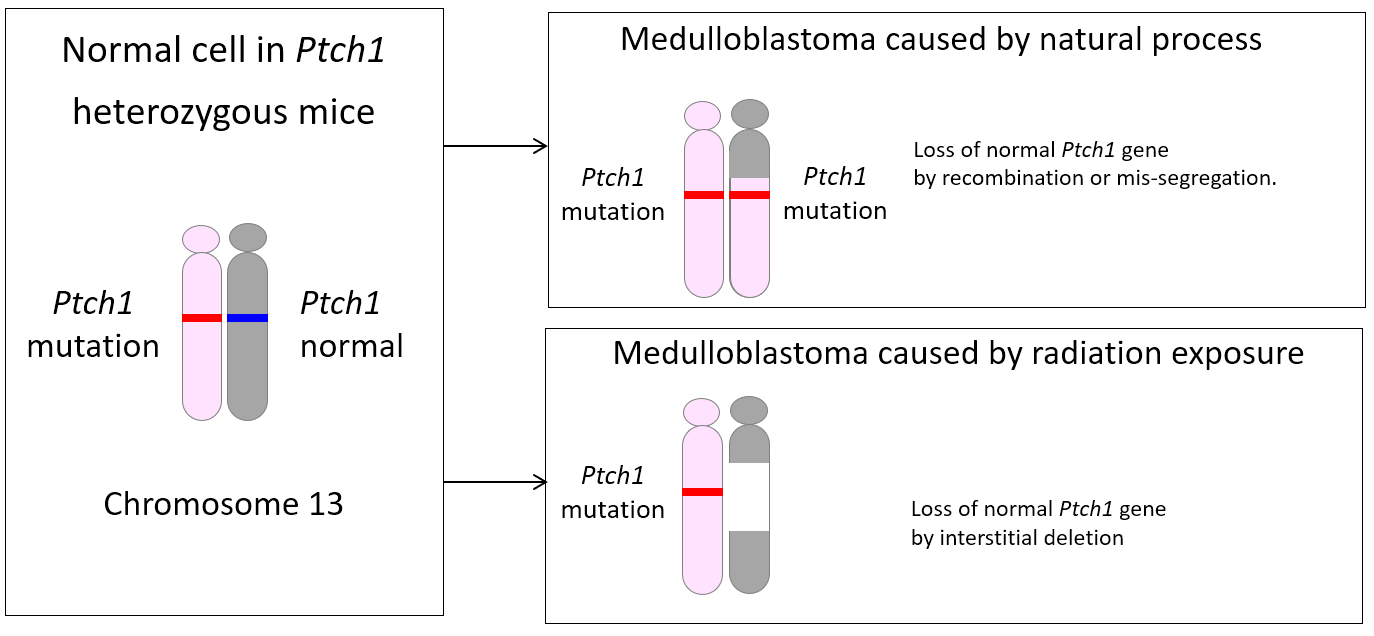The research group of Shizuko Kakinuma, Director of Radiation Effects Research Department, and Chizuru Tsuruoka, Senior Researcher, National Institute of Radiological Sciences, National Institutes for Quantum and Radiological Science and Technology (QST), developed a method to accurately evaluate the effects of neutron radiation on carcinogenesis using a special mouse model created by R&D, which can distinguish between radiation exposure-induced cancer and natural cancer. They succeeded in demonstrating for the first time that the risk of cancer caused by neutron radiation is greater than that caused by gamma rays of the same dose.
Cancer is caused by several factors, including radiation exposure; however, it was unclear whether previous carcinogenic risk assessments could accurately assess the effects of radiation exposure (radiation exposure-induced cancer). A special mouse model (Ptch1 heterozygous mouse) that can distinguish between radiation exposure-induced cancer and spontaneous cancer was used by the study group to assess the effects of exposure to neutron radiation, which is considered to greatly affect health. Ptch1 heterozygous mice were irradiated with 0.025-0.5 Gy of neutron radiation or gamma rays and then reared for 500 days to determine the extent of cancer development during the period (medulloblastoma: a malignant brain tumor that occurs primarily in the cerebellum of children).
As a result, the carcinogenic rate did not increase with an increasing dose of gamma rays, and the effect of gamma rays could not be accurately demonstrated. In contrast, the effect of neutron radiation was large, and the carcinogenic rate tended to increase with increasing doses. Therefore, the cancer that developed was divided into radiation exposure-induced medulloblastoma and spontaneously occurring medulloblastoma. The hazard ratio was determined based on the time (days after birth) and frequency of the occurrence of radiation exposure-induced medulloblastoma.

Credit: QST
The results demonstrated a high proportional relationship between the dose and hazard ratio for both gamma rays and neutron radiation at doses as low as 0.5 Gy or less. Furthermore, the carcinogenic rate of neutron radiation was significantly higher than that of gamma rays. Dr. Kakinuma said, "In the future, we will evaluate the carcinogenic effects of radiation other than neutron beams (heavy particle beams and proton beams for example) and different exposure conditions. Such results will be the basis of radiation protection in the future, and so we would like to proceed with this research."
■ Hazard ratio: A numerical indicator of the extent of increase in the risk for carcinogenesis owing to irradiation. It is expressed as a numerical value relative to the frequency of occurrence in non-irradiated mice reared at the same time, which is set to 1.
This article has been translated by JST with permission from The Science News Ltd.(https://sci-news.co.jp/). Unauthorized reproduction of the article and photographs is prohibited.




